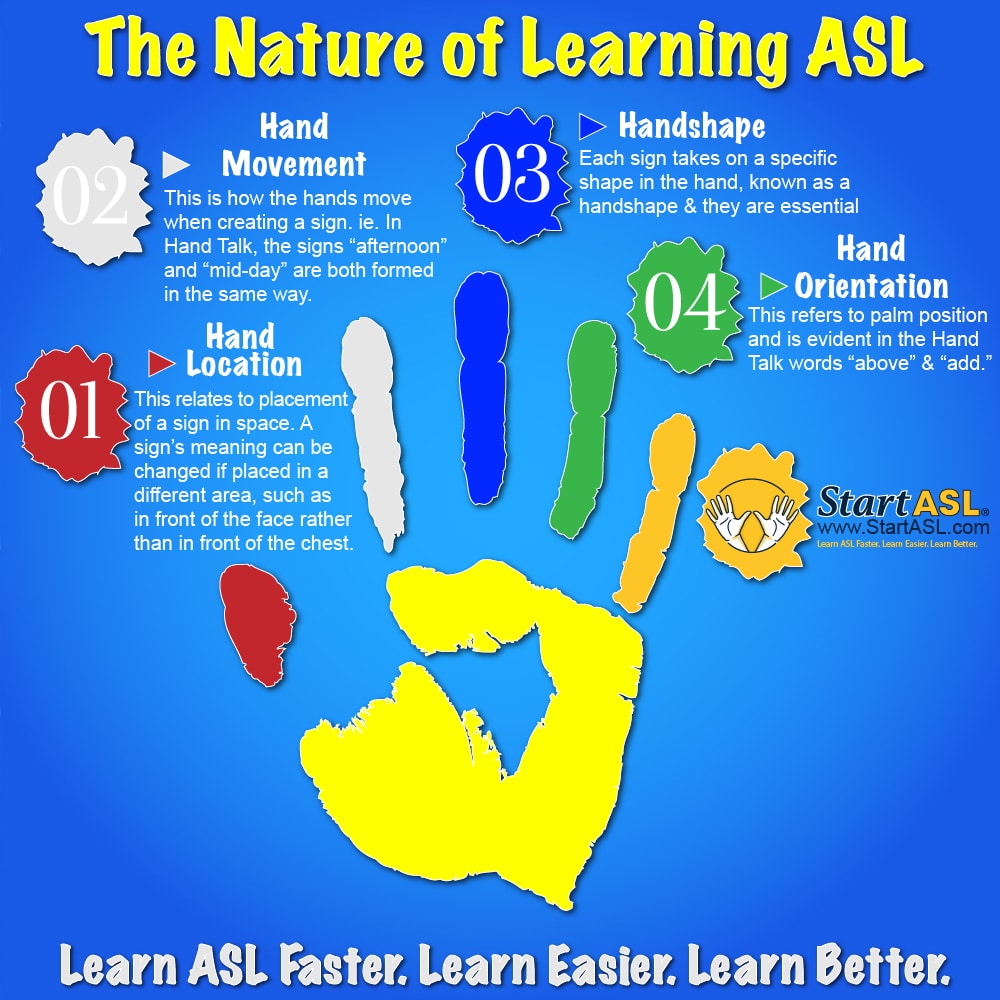
Native American Sign Language, or Hand Talk, was developed hundreds of years before American Sign Language came into being. It contains four crucial elements: hand location, hand movement, hand shape, and hand orientation:
1. Hand Location: The relates to the positioning of a sign in an area. The sign’s meaning is altered when positioned in a different area, for instance in front of one’s face as opposed to in front of one’s chest.
2. Hand Movement: This one involves how the hands move when creating a sign. As an example, in Hand Talk, the signs “afternoon” and “mid-day” are shaped in the same way. The only real variation is the fact mid-day is stationary, and afternoon moves from over the head to the side of the head in an arching gesture.
3. Handshape: Every sign takes on a unique shape in the hand, also known as a handshape. The handshapes of signs are necessary factors. To illustrate, the signs for “yes” and “I know” are the same in most respects apart from the handshape; in “yes” the hand forms the characteristic J shape, while in “I-know” the hand forms the L shape.
4. Orientation: This refers to palm position and is evident within the Hand Talk words “above” and “add.” Both signs involve utilizing the left-hand to make a base, from which the right-hand rises, and both have identical locations, movements, and handshapes. Nevertheless, once signing “above,” the non-dominant hand is positioned palm down, while in “add” the non-dominant hand is palm up.
Hand Talk’s Impact on American Sign Language
Not one person takes credit for creating American Sign Language. It's heritage reaches straight back to early 19th century, when forms of signs formulated in New England’s Deaf local communities. And through the latter section of that century, Hand Talk influenced the development of ASL, but historians mostly overlook this fact.Hand Talk comes with regional varieties which exist throughout North America. Some examples are a northeastern version that ranges over the current-day New England, upper Midwest, and Mid-Atlantic states. Experts consider this version of Hand Talk considerably impacted the development of American Sign Language. This influence took place in the 19th century through the signing of Native American youngsters that went to the American School for the Deaf in Hartford, Connecticut. An internet-based video titled “The Hidden History of “Hand Talk” presents convincing data for Hand Talk’s impact on ASL and US culture.
Even so, regardless of its once-huge quantity of users and powerful impact on American Sign Language, Hand Talk is in decline. This effect is a result of the wide-spread depopulation and Americanization of Indigenous North Americans over the past Two hundred years. As an example, in 1885, around 110,000 Blackfoot, Cheyenne, Sioux, Kiowa, Arapaho, and other tribal peoples utilized Native American Sign Language or Hand Talk. But by the 1960s, only a fraction of this quantity remained. Currently in the Twenty-first century, few active Hand Talk users remained.
Similar to the other native languages of North America, Native American Sign Language is dwindling in numbers. But as the amount of proficient signers might be small, the language continues to be used to varying degrees by some members of Siouan and Algonquian tribes.
In addition, activists like Deaf Cherokee researcher Dr. Melanie McKay-Cody of Arizona are working considerately to keep North American Hand Talk alive. Dr. McKay-Cody works with tribal groups to help them safeguard their signed languages. She additionally encourages for Hand Talk to be incorporated into the mainstream education of Deaf and Hard of hearing students. It’s hoped that this kind of initiatives can help Hand Talk to live on. In this way, forthcoming generations can easily still utilize and relish the language and appreciate the rich cultural tradition from which it originated.